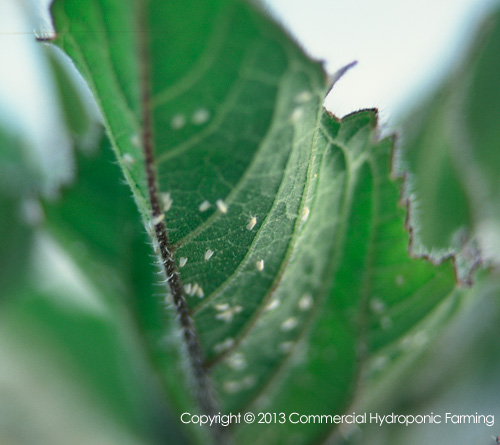9 Tips on good seedling disease management
A clean nursery is the first vital step towards producing a healthy crop and forms part of a good seedling disease management program. Not only must the seed be disease free, but the environment in which the seedling will germinate and grow for 4-6 weeks, should also be free of diseases.
The first step in your seedling disease management program is to ensure that the seed being used is disease free, if a grower is not sure, seed treatment is recommended. So buy your seed only from reputable companies. The design of the nursery is also extremely important. Seed trays left on soil or debris from dead plants are a sure way of importing diseases into the production area. By raising the seed trays as mentioned earlier in this chapter, half the battle will be won.
The ideal seed tray is plastic. They do not have micro-pores in which bacteria can “hide” and infect the plant at a later stage. It is recommended that all seed trays be disinfected with formalin. Never use chlorine on polystyrene trays. The chorine will penetrate the small pores and damage the roots of the small seedlings during growth. All hand tools should also be washed with formalin in order to prevent the spread of diseases.
There are few chemicals which can be used for seedlings. Bravo® may be used for the control of white mould and botrytis on a number of vegetable seedlings. Mancozeb® is used to control fungi and is quite safe to use. Refer to label on all chemicals before using, especially the dosage.
Vegetable seedlings often germinate poorly under humid conditions, particularly if soils are cold and wet. Replanting or the production of weak, sickly plants often results. Damage usually is caused by one or more soil-borne fungi that attack under conditions unfavourable for rapid seed germination and growth.
Seeds may rot or seedlings may decay before emerging (pre-emergence damping-off). Young plants that do emerge are weak and often wilt from infection at or below the soil line (post emergence damping-off). The bases of infected stems generally are water-soaked at first, turn grey to brown or black, then rot. Seedlings of cabbage, cauliflower, radish, tomato and beans may be girdled by brown or black sunken cankers. Stems of these plants may shrivel and become dark and woody (wire stem or collar rot), but the plants normally do not collapse. These transplants die eventually.
Control measures for damping-off primarily are preventive, because the disease usually is quite difficult to stop once symptoms are seen. A seedling disease management strategy is to eliminate the fungi that causes damping-off or to provide chemical barriers that prevent the fungi from growing.
- Use only certified disease-free seed from reputable seed houses.
- Use fungicide-treated seed. Some fungicides are labelled for application to certain vegetable crops for control of damping-off. See specific crop recommendations and the following section, “Seed Treatments.”
- Sterilize plant beds if practical, or use a commercial, disease-free, soil-less mix in flats or pots.
- Disinfest all flats, cold frames, pots and tools.
- Plant in a light, well-drained, well-prepared, fertile seedbed under conditions that will ensure rapid emergence.
- Avoid heavy soils, overcrowding, poor air circulation, careless handling, too-deep planting and over fertilization (especially of nitrogen).
- Apply a soil insecticide if needed.
- Do not over-irrigate. Do not use pond water or other surface water.
- Provide adequate light for rapid growth.
Share This Story, Choose Your Platform!
Cotton aphid – Aphis gossypii
Cotton Aphid, or Aphis gossypii, is one of the more common insect pests found in almost all vegetable crops and [...]
Greenhouse white fly
Description Greenhouse white fly, also known as Trialeurodes vaporariorum is a sap feeder. The easiest way to find white flies [...]







